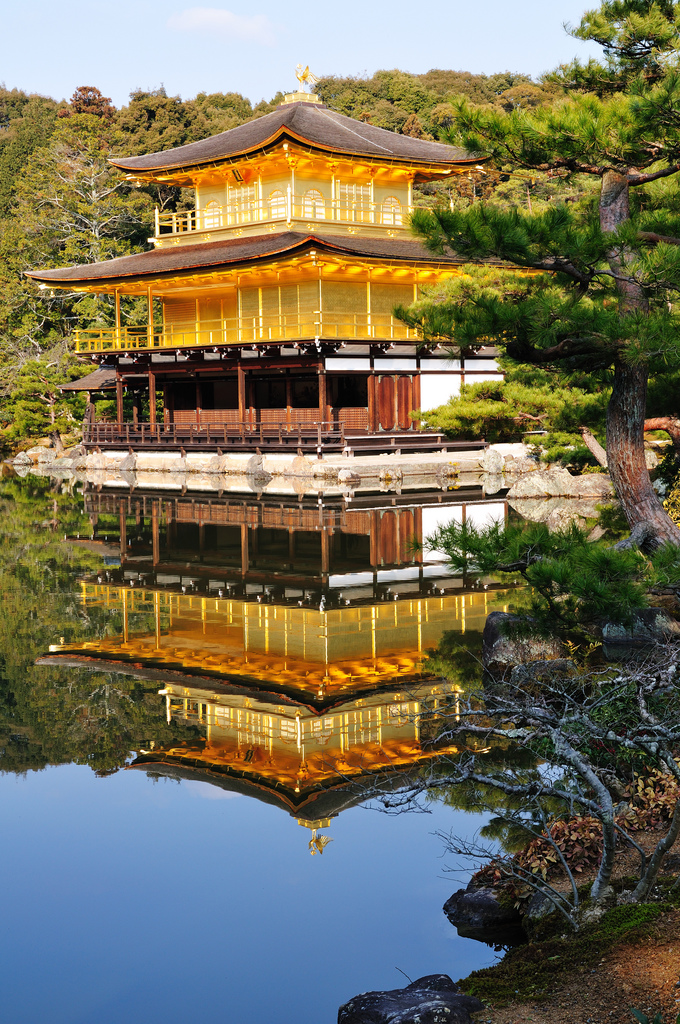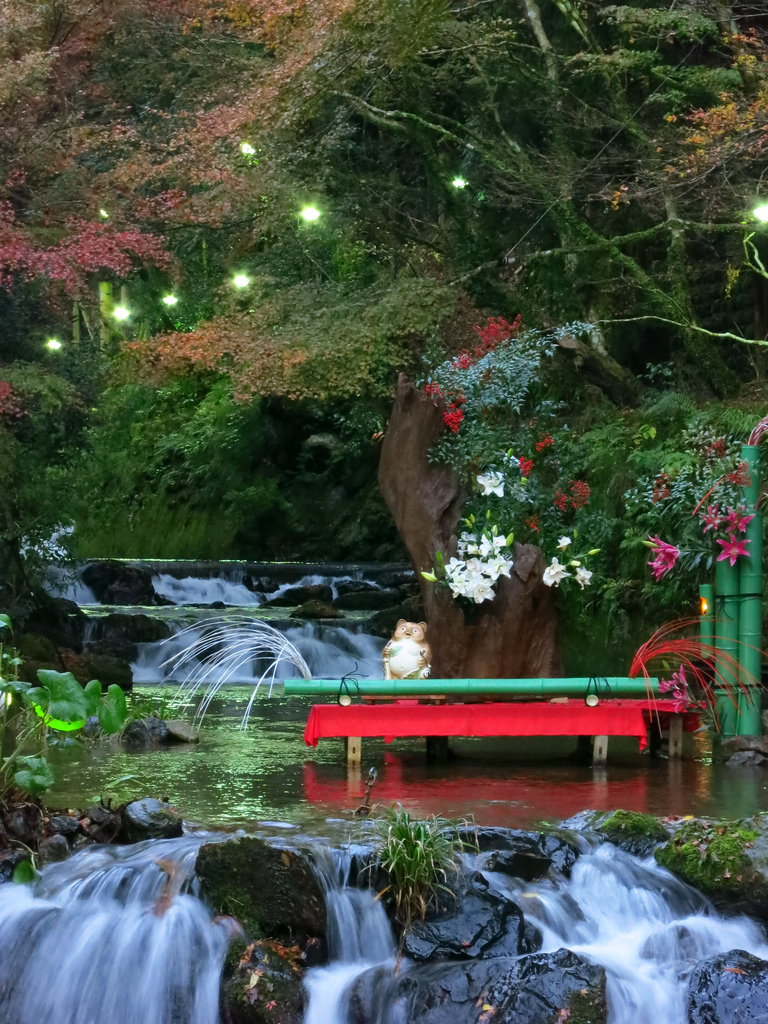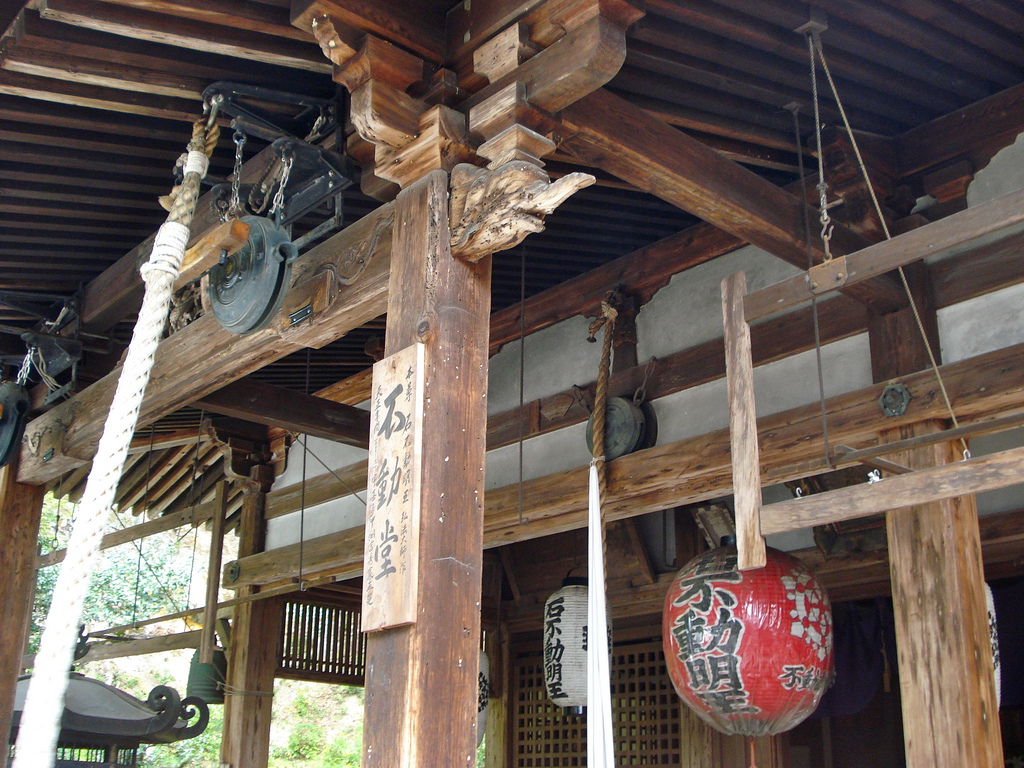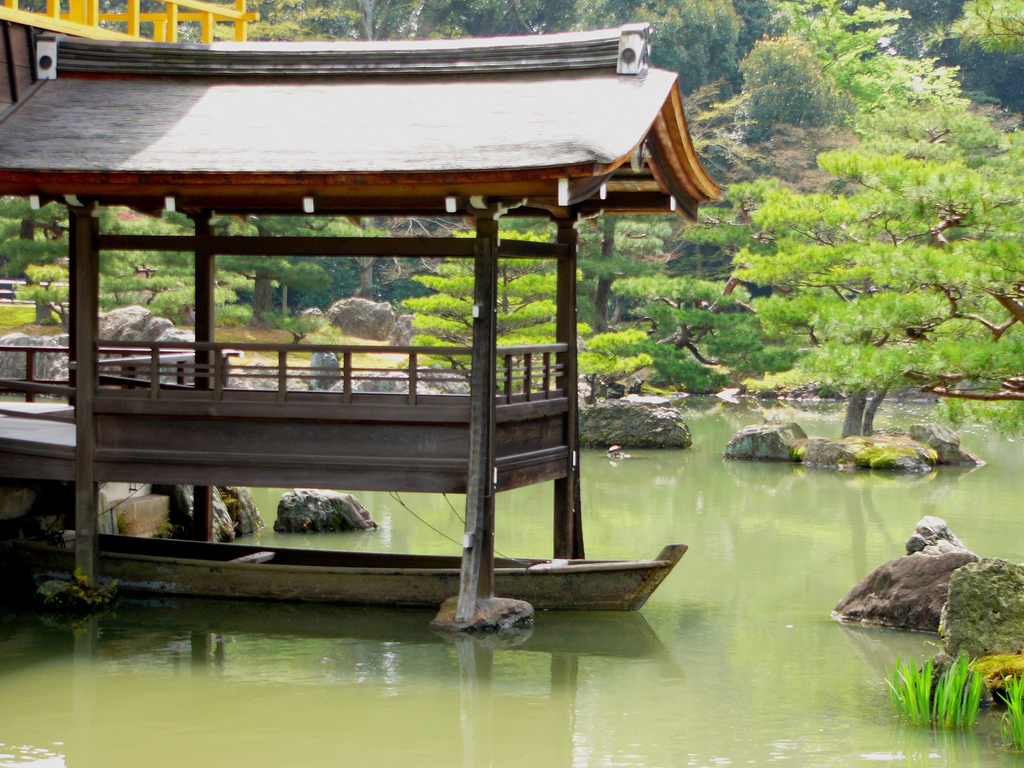
Kinkaku-ji 金閣寺
Kinkaku-ji literally translates as “The Temple of the Golden Pavilion.” One look will explain the name, since the 3-story structure is covered in shining gold leaf, reflecting in the pond next to it on sunny days. This beautiful landmark is one of the seventeen World Cultural Heritage Sites in Kyoto, though the current structure only dates back to 1955.

貴船神社 kibune
The original building was purchased in 1397 by the Shogin Ashikaga Yoshimitsu from a prominent statesman. It is considered a fine example of Muromachi garden design, which stressed the connection between a building and its setting. At the shogun’s request, when he died the villa was turned into a Zen Buddhist temple by his son. The temple’s official name is Rokuon-ji, or “Deer Garden Pavilion.” However, the nickname from the gold leaf is much more familiar. The leaf is supposed to represent purity, but it also showcased the shogun’s importance and wealth.

Kinkaku-ji (金閣寺) surroundings
The temple was destroyed by fire twice, first during the Onin wars, then again in 1950. The latter was a sensational arson by an apprentice monk with mental illnesses. Unfortunately, the statue of Yoshimitsu were also destroyed at that time. Now the building is not open to the public; you can only view it from the bank of the pond.

Kinkaku-ji
Entry fees are ¥400 per adult or ¥300 for students. Take the Kyoto City Bus number 101 or 205, and get off at the Kinkaku-ji mae stop.
Will Bloodfarm put together a nice video of Kinkaku-ji highlighting the majesty and serenity of this temple.
The site is open year-round, and is especially beautiful with fall colors or snow. A good website with information in English is: http://www.japan-guide.com/e/e3908.html
 photos by:
ajari &
Norio.NAKAYAMA,
Carles Tomás Martí,
robertpaulyoung
photos by:
ajari &
Norio.NAKAYAMA,
Carles Tomás Martí,
robertpaulyoung